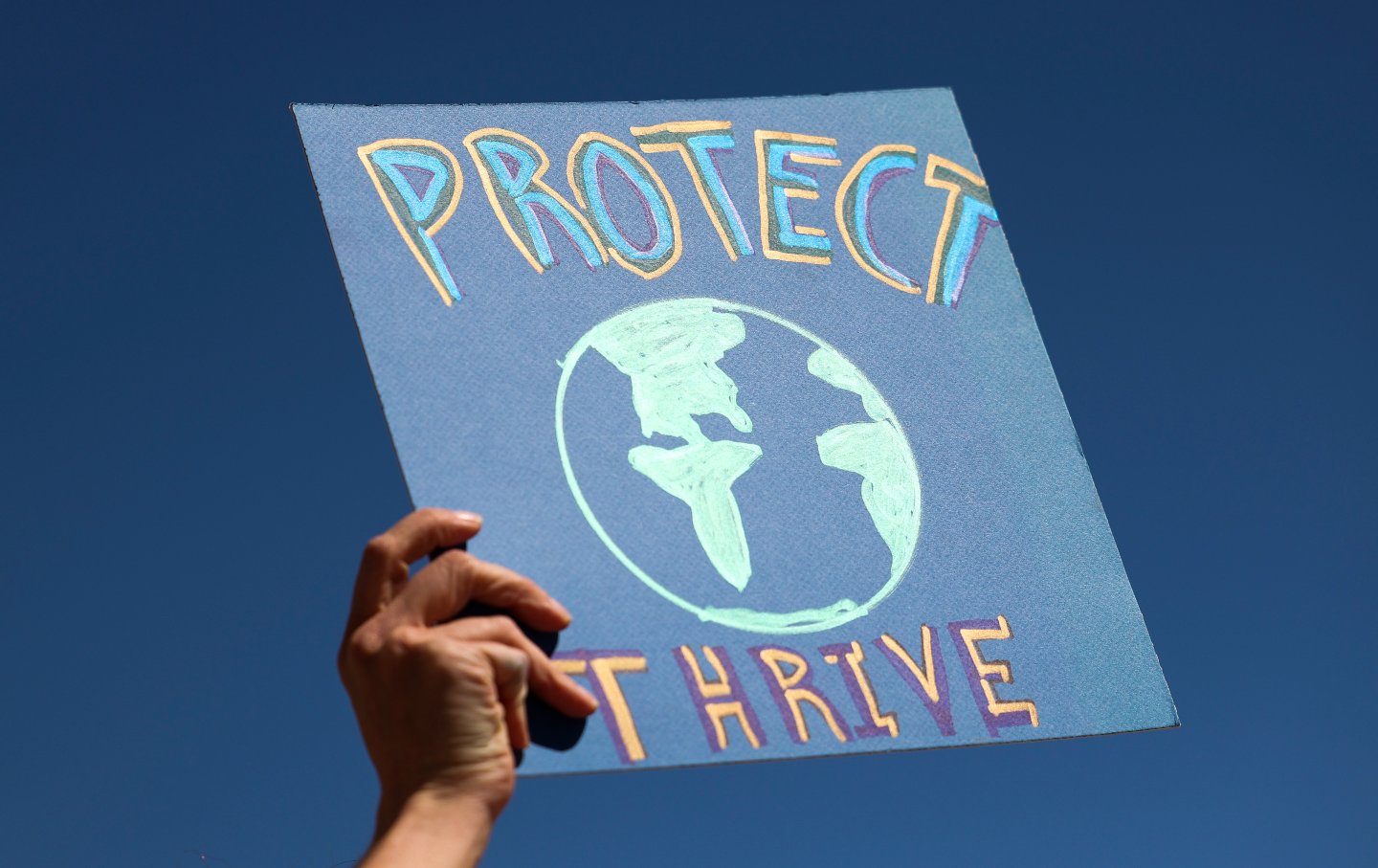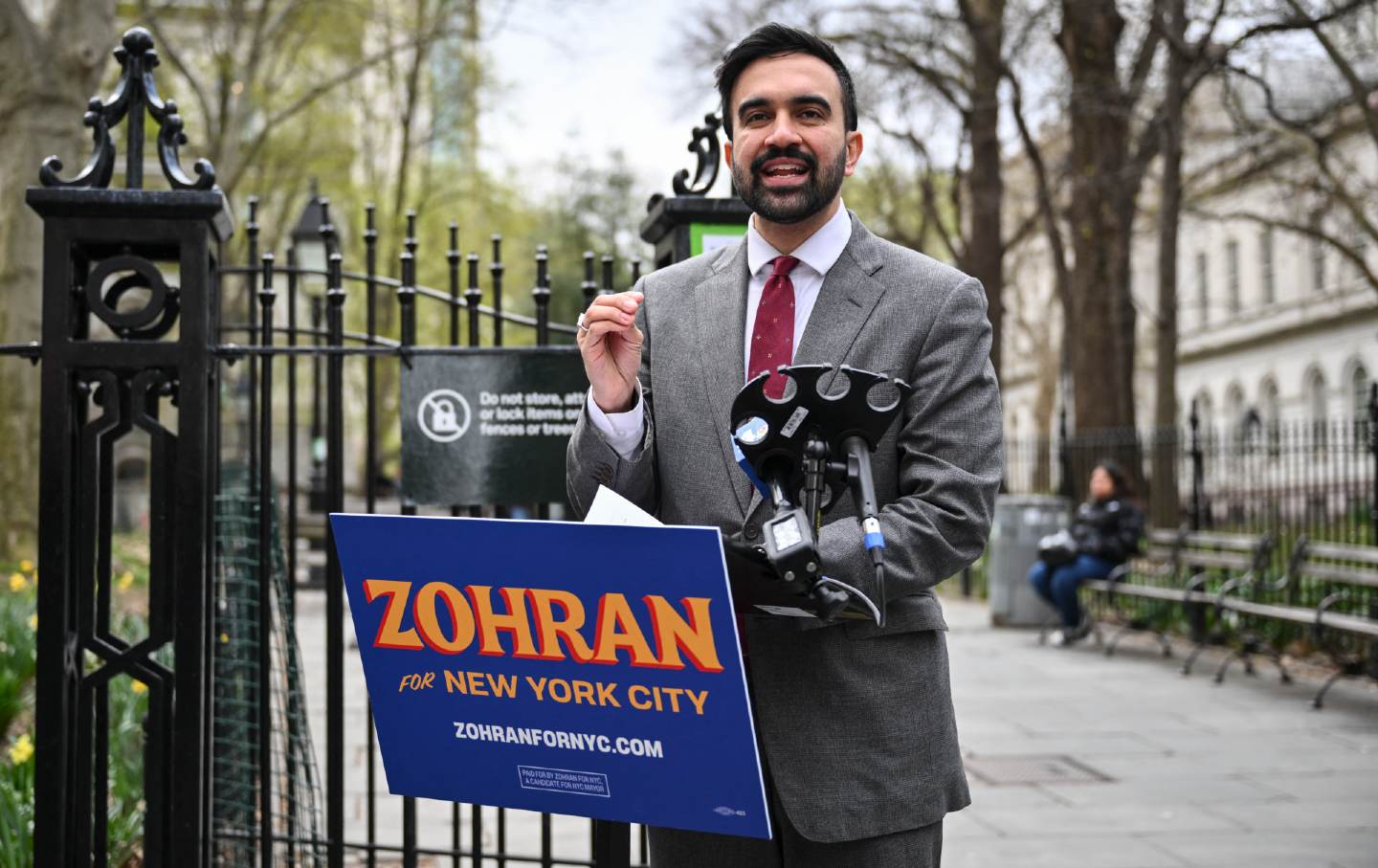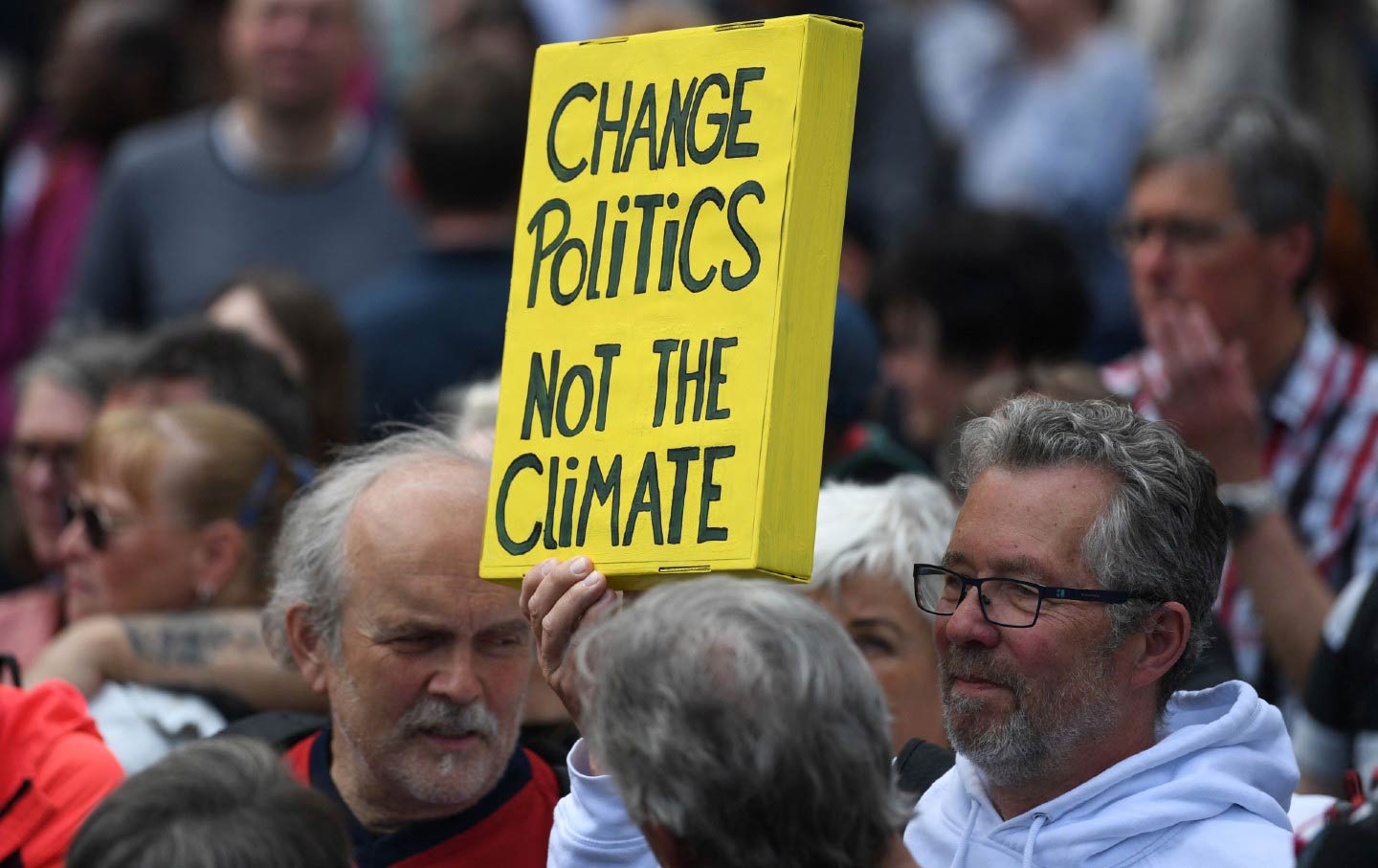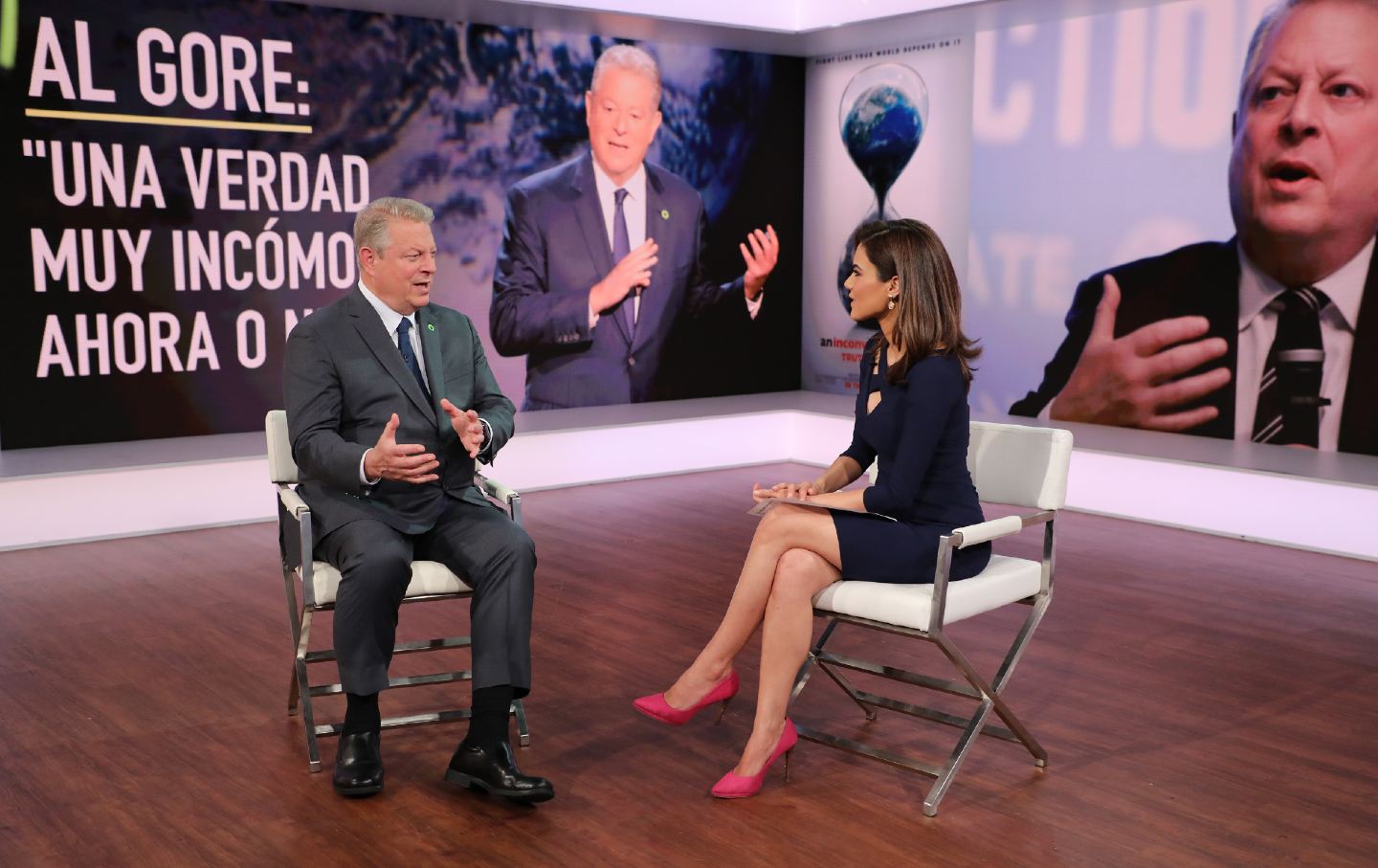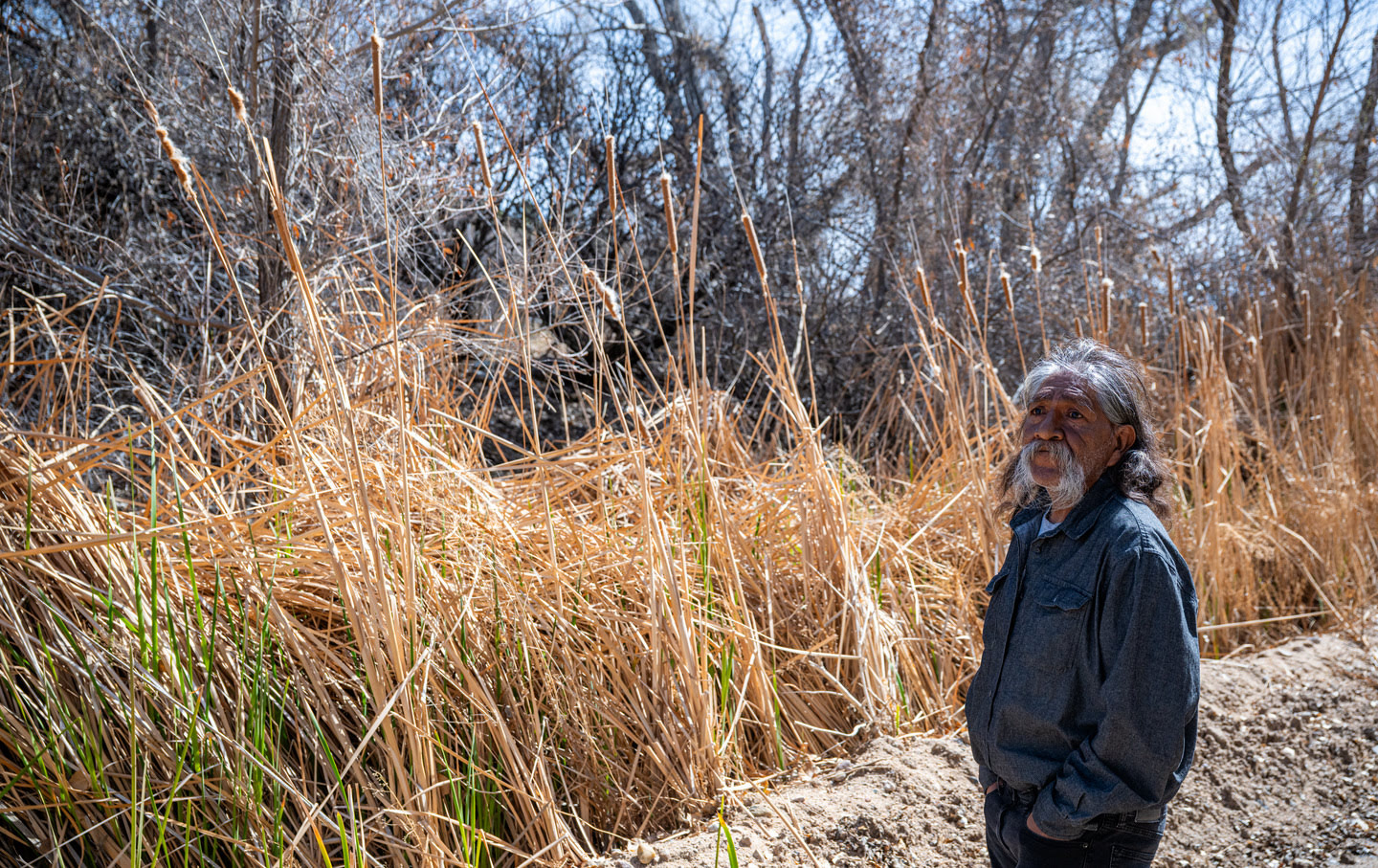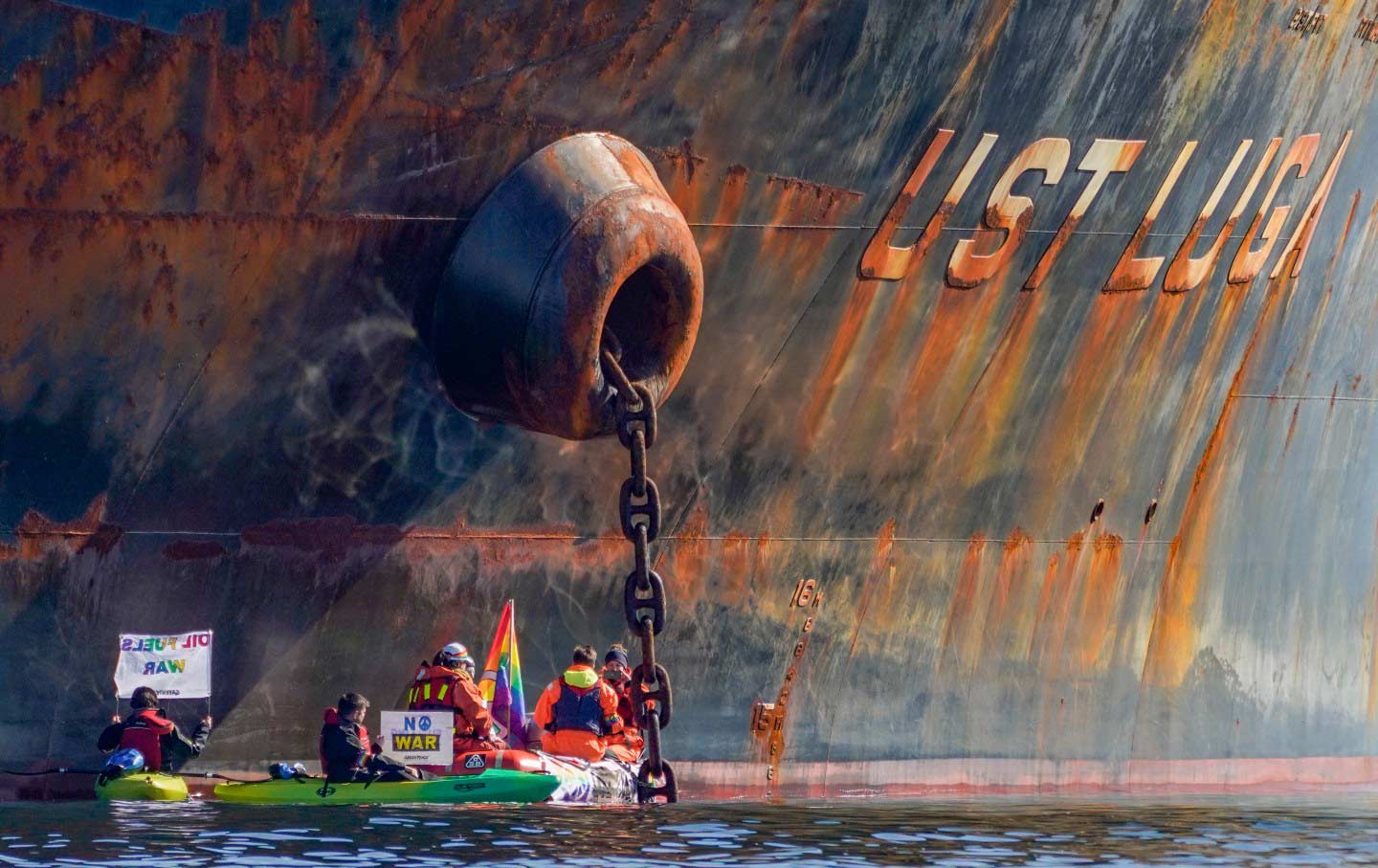The Industry Behind Your Filet-O-Fish Is Destroying Alaska’s Oceans and Rivers
While the deep-pocketed trawling industry rakes in millions, indigenous Alaskans, small-scale fisheries, and the state’s ecosystem are being left out to dry.
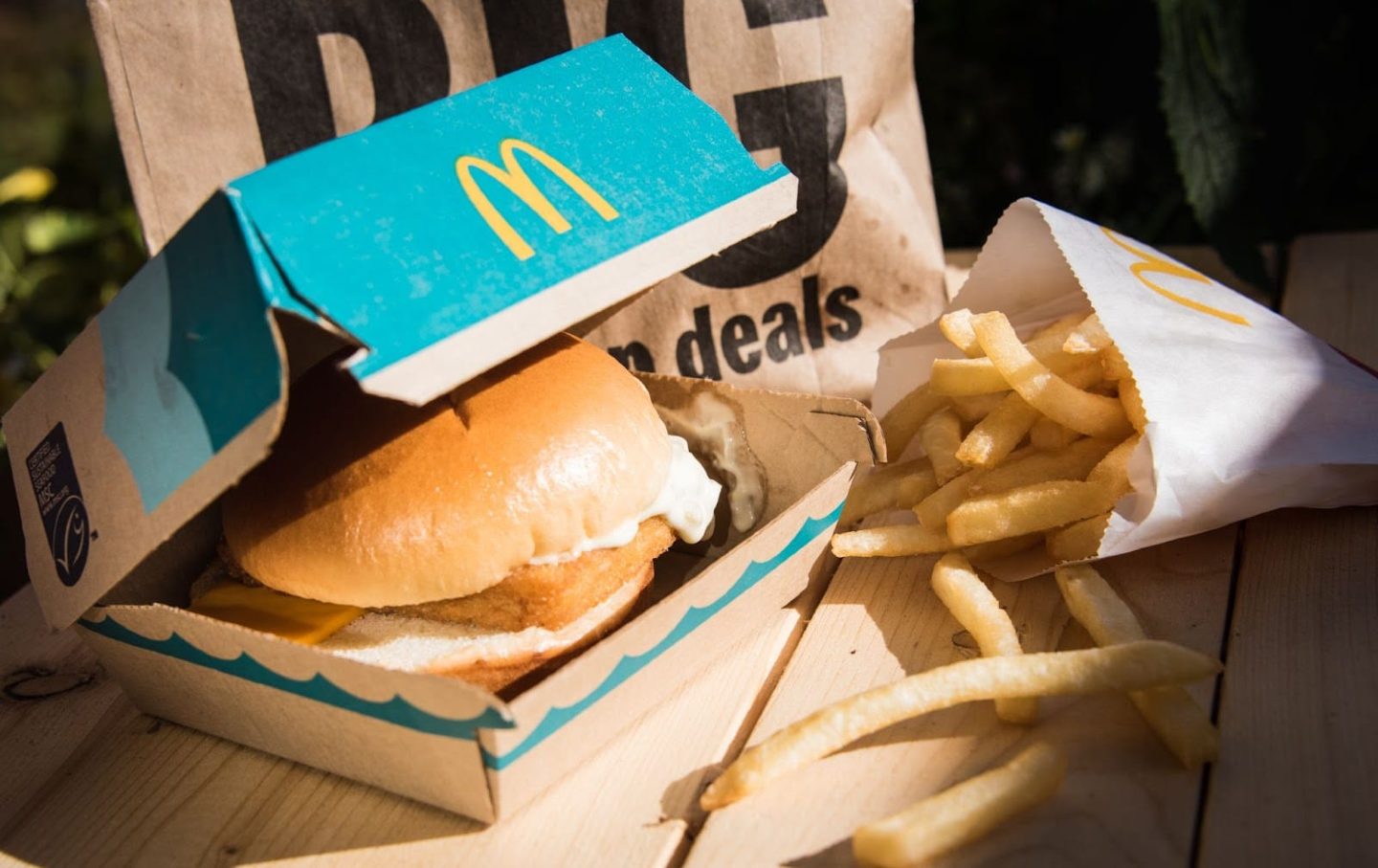
This article was originally published in The Lever, an investigative newsroom. Subscribe to their free newsletter here.
With a sizzle of grease, a McDonald’s Filet-O-Fish slides across the sticky drive-through counter in Homer, Alaska. Before being battered and fried, the fish in this sandwich was likely caught along the state’s rugged western coast, in the rapidly warming Bering Sea.
You’ve probably eaten Alaskan pollock, even if you didn’t know it—it’s in fish sticks in school lunches and freezer aisles, sold at Burger King, Wendy’s, Arby’s, and White Castle, mixed into fish-oil supplements, imitation crab meats, and faux salmon dips. Over 2.7 billion pounds of the mottled silver fish are caught annually in one of the world’s most valuable fisheries, representing a market of almost two billion dollars.
While pollock is often held up as a prime example of sustainably sourced seafood—industry groups claim it is “one of the most climate-friendly proteins in the world”—the reality is far more murky.
To get all this fish from the Bering Sea, which provides more than 40 percent of all seafood caught in the United States, factory trawlers drag huge nets that sweep up catches by the ton. Their gear regularly scrapes the bottom of the seafloor for miles at a time, destroying vital, slow-growing habitat. Trawling boats—those that catch species living on the bottom, and those that target pollock—often snag species they don’t intend to, what’s known as bycatch. Regulators reported this included 10 orca whales in the Bering Sea last year.
Trawlers’ bycatch also includes failing fisheries like Chinook salmon—whose population has declined so much that residents on the Yukon River who rely on them are prohibited from catching any for the next seven years. Critics warn that years of disrupting marine habitat and food webs have contributed to massive population collapses in other species like seals and crabs. “They’re destroying the building blocks of the entire ecosystem,” says Kevin Whitworth, the executive director for Kuskokwim River Inter-Tribal Fish Commission, a group representing 33 federally recognized tribes along the Kuskokwim River.
Advocates say regulators are ignoring the mounting catastrophe, in part because many members of the North Pacific Fishery Management Council, the federal body that oversees the Bering Sea’s fisheries, have close ties to—and in some cases simultaneously work for—the commercial fleets they manage. Smaller-scale fishermen, lawmakers, and tribal governments say the system is designed to protect the industry’s status quo.
A recent lawsuit against the council claims the regulatory body ignores well-conducted, peer-reviewed studies about trawling’s impacts on the Bering Sea floor, which stretches between Russia’s Siberian coast and Alaska’s Aleutian islands. Meanwhile, trawlers receive tax credits for funding research that helps shape council decisions. Even basic information like how often the fleet’s gear is making contact with the bottom has been overlooked, obscuring potential causes for species’ declines.
The council, and several of its members, did not respond to repeated requests for comment.

The trawl industry has aggressively pushed back against criticism, reportedly intimidating fishermen and journalists from speaking out for fear of losing jobs or limiting access to markets. Multiple people, including former council members, spoke to The Lever on condition of anonymity, citing previous personal threats. The Alaska Pollock Fishery Alliance, which represents the region’s pollock companies, told The Lever these fears are “unfounded.”
Even as the climate has rapidly changed, putting stress on the marine ecosystem, government regulators have been slow to update harvest or bycatch limits for commercial fisheries. Now, two tribal groups are suing the federal government over its use of outdated 20-year-old assessments for its catch limits.
As halibut populations shrink, for example, trawling vessels—primarily in the fleets that target species on the bottom—are allowed to accidentally catch and discard more halibut than sport and subsistence fishermen intentionally harvest. This gives industry “no incentive to reduce halibut mortality,” dozens of state legislators wrote in a recent bipartisan letter.
After years of pleading by Alaskan residents worried about the obvious decline of other fish stocks, the council finally adopted an amendment tying how much halibut bycatch trawlers can sweep up to the fish’s relative abundance. Because this might restrict their fishing, trawlers promptly sued; the case is currently making its way through the federal court system.
Meanwhile, trawlers are still hauling in bycatch. At the end of September, pollock trawlers based out of Kodiak, Alaska, accidentally caught around 12,000 Chinook salmon—almost the same amount that made it back to Canada last year. The ships were fishing in the Gulf of Alaska, but using the same kind of nets as they do farther north in the Bering Sea. The discovery prompted federal managers to shut down the fleet’s operations a month before it normally stops for the winter.
For Eva Burk, a Dene’ Athabascan who sits on a nonvoting advisory panel to the North Pacific Fishery Management Council, it feels like the deep-pocketed trawling industry, which is largely based in Washington, is getting a free pass, while tribal residents in Alaska are losing access to their traditional foods. “When you can’t fish, but other people are intercepting your fish, that is not sharing the burden of conservation,” she says.
Sitting in her kitchen in Fairbanks this spring, Burk was preparing smoked sockeye salmon, her hands swiftly packing cherry-red strips into jars. She’s had to modify her traditional recipes since the moratorium on catching the Yukon’s Chinook salmon, which threatens not only food security, but a crucial link to a way of life.
Her practiced gestures sharpen with frustration as she explains that for decades, residents have been sounding the alarm that Chinook were dwindling, not growing as large, and carrying fewer eggs. When fish navigate the turbulent waters of Alaska’s rivers, they are generally managed by the state, which has its own strained relationship with tribal residents. But salmon mature in the Bering Sea, where the waters between three and 200 miles offshore are regulated by the federal North Pacific Fishery Management Council. This fragmented system is a “super toxic, unhealthy space that’s dominated by economic interests,” Burk says.
As a result, “it’s not just the salmon that are in decline in my area,” she says. “It is everything, freshwater fish, migratory birds—everything.” But as a member on the council’s advisory panel, it’s been difficult for Burk to share traditional knowledge about how Alaska’s ocean and rivers are changing, like how baselines have shifted—or perspectives that don’t prioritize profits. “There’s just so much pressure on this resource,” she says. “I don’t know how to cure American capitalism, and that’s what this whole process needs.”
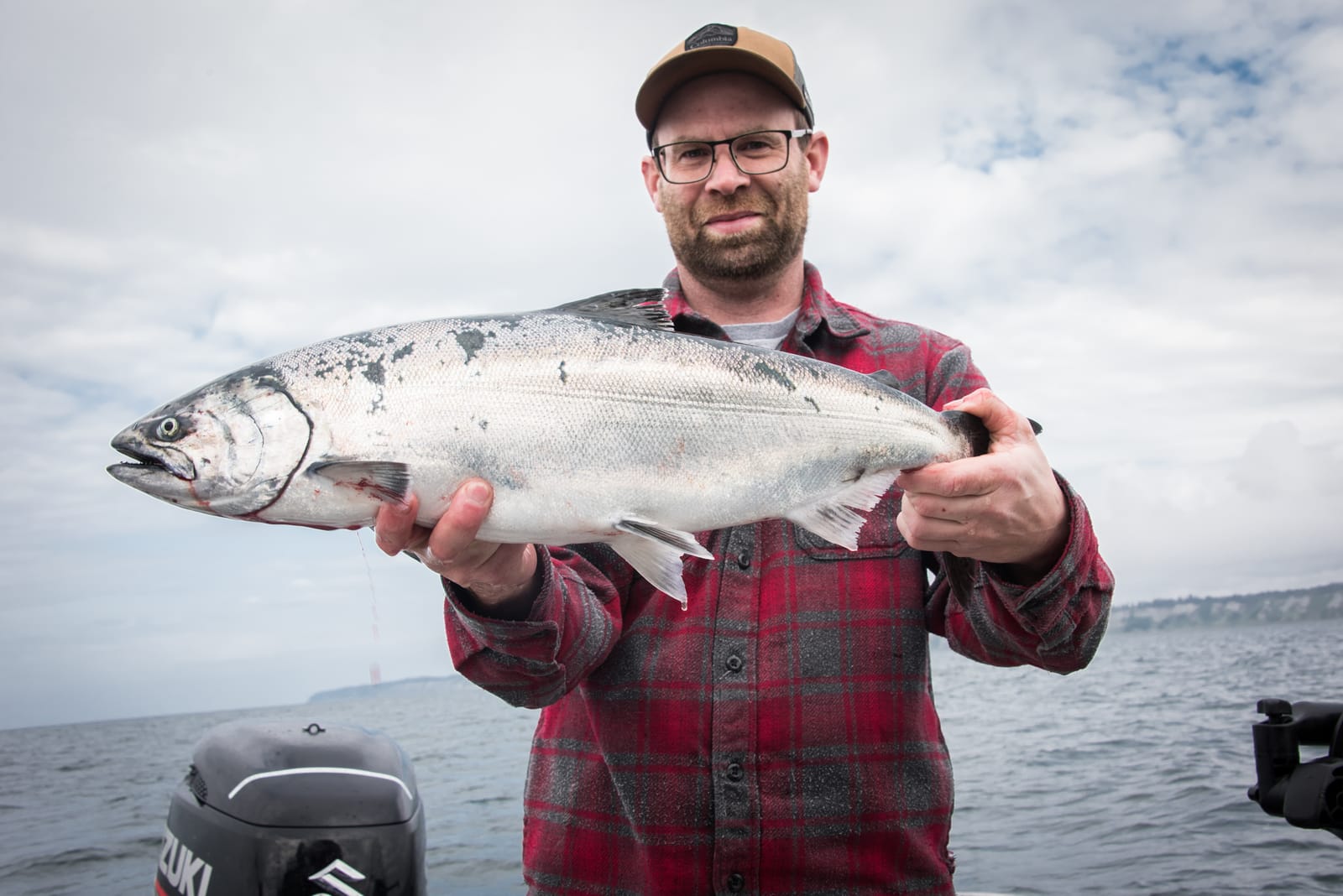
“There’s A Game Within A Game”
David Bayes points the bow of his low-prowed boat out of Homer’s harbor as a sloppy chop pounds sheets of water against the windshield. Clouds ride low over the nearby glaciers. Bayes grew up fishing with his dad, before getting his degree in biology.
He started a charter boat business in the early aughts, taking tourists out for a day on the water. Unlike commercial trawlers, this kind of sport fishing—which usually uses reel and tackle—catches just a handful of fish at a time.
Watching the halibut and salmon populations his business depends on dwindle, Bayes began to question the North Pacific Fishery Management Council’s approach to bycatch.
“I was young and ignorant,” he said, steering into the swells. “I was like, ‘They’re just missing this data.’” By then the chair of the Alaska Charter Association, he wrote letters, pointing out how much halibut trawlers simply threw away, even as limits for fishermen like him tightened. The council was unswayed.
The details differ for each fishery, Bayes says, but trawling’s impact is widespread. Since the 1980s, trawl-fleet fishing has developed large commercial markets in the region. The National Oceanic and Atmospheric Administration (NOAA), the scientific and regulatory agency that manages marine fishing, says the pollock fleet uses “midwater trawl nets” that “sometimes” make contact with the bottom. But for more than 20 years, the agency has known this fishing gear actually makes frequent seafloor contact. In 2022, research was presented to the council that vessels that catch and process pollock have gear that can actually drag the bottom up to 100 percent of the time.
Nevertheless, the ships in the Bering Sea pollock fleet are allowed to fish in places where vessels that admit to bottom contact aren’t, like in areas that are closed to protect crabs. Some of them can process up to 225 metric tons of fish a day. “Bottom contact in the pollock fishery has been well understood by [NOAA’s] National Marine Fisheries Service and the council for decades,” says the Alaska Pollock Fishery Alliance, arguing that “the impact on habitat from pollock trawling is minimal and temporary.”
These debates are overseen by a council that was designed to include representatives from the fishing industry: In the 1970s, Richard Nixon transferred control over fisheries to the Department of Commerce, cementing economics as an important part of marine resource management. The first director of the National Marine Fisheries Service said at the time that it marked “the birth of a new era,” highlighting “both commercial and recreational interests.”
Then in 1976, the Magnuson-Stevens Fishery Conservation and Management Act created a system of eight regional councils to manage fisheries in federal waters. As an advisory body, councils were exempt from federal conflict-of-interest guidelines, and members were allowed to be financially involved in the fisheries they oversaw—since in theory, having skin in the game was considered a good thing.
Current council member Nicole Kimball says the legislation aimed to include those with experience in fisheries, including industry participants. “Industry expertise,” Kimball says, “helps ensure sustainability and economic benefits to fishing community stakeholders coexist.”
In practice, this approach quickly led to various sectors jockeying over key issues, and the rise of professional fishery lobbyists. By the 1980s, writes C. Braxton Dew, a fisheries biologist who spent 25 years working for NOAA, management had been “deformed by a system of perverse monetary incentives.” As red king crab stocks crashed, for example, the North Pacific Fishery Management Council claimed deaths from bycatch and handling were forms of natural mortality, a contortion of basic science Dew called “gaslighting.”
After the species collapsed again in 2021, the Alaska Bering Sea Crabbers Association filed an emergency petition with the council. They asked for all types of fishing to be banned from an important nursery area in the eastern Bering Sea, citing the council’s own research about how often trawl gear made contact where crabs were molting and mating. It was denied the same day trawlers’ pollock season opened. “I agree most certainly that this is an emergency,” said council member Andy Mezirow. “It just doesn’t merit the criteria of the emergency action.”
This kind of legalese drives Bayes crazy: “If you polled fishermen, they’d go, ‘Shit, yeah you got to kick them out of there, the crab crashed.’” But last year, NOAA’s Office of Law Enforcement told the council 26 vessels had likely scraped ground in the red king crab savings area, as did five others in Gulf of Alaska protected areas. The agency said fishing in these conservation zones is technically allowed, because “while pelagic trawl gear does contact the bottom, it is not defined as Bottom Contact Gear.”
Yet questions about the council’s contradictions tend to lead to blowback. “There’s always this mafia-esque aura of, like, ‘We don’t speak up against trawl,’” Bayes says. His family and other fishermen warned him not to stick his neck out and ruin his career. But eventually, “It just clicked that these guys aren’t going to take money out of their own pockets to do what’s right,” he says.
Bayes started moderating a Facebook group called “STOP Alaskan Trawler Bycatch.” It quickly gained traction, attracting followers from across the political spectrum. At first, Bayes was surprised that people didn’t believe his posts, even when he cited statistics directly from National Marine Fisheries Service. “I found that for people to believe just the raw numbers,” he said, “I have to explain all of this background of how our government essentially doesn’t protect us.”
He posted bycatch numbers buried on federal websites, like how trawlers are allowed to discard 5.5 million pounds of herring, the foundation of the Bering Sea’s food chain, as bycatch. When the trawl fleet approached that limit in 2020, the council decided in a single meeting to double the annual cap—preventing any pollock trawling closures. Bayes hoped that making this kind of information more publicly accessible would embolden career agency staffers and NOAA law enforcement, who he suspects know the system is flawed but may be afraid to speak up.
Concerns have been difficult to address, perhaps because of the makeup of the North Pacific Fishery Management Council itself. The US Secretary of Commerce selects seven of the 11 voting seats from nominees provided by the governors of Alaska and Washington, while the remaining four are designated by state and federal officials.
During the 2018 gubernatorial election, the Pacific Seafood Processors Association, an industry trade group, donated $100,000 to Republican Mike Dunleavy’s campaign for Alaska’s governorship. After Dunleavy won, he appointed Kimball, the company’s vice president of the Alaska operations, to one of the council’s seats. A spokesperson for the association says “the contribution was legal, transparent, and part of a process that allows any group to support any candidate that aligns with their concerns.”
Another council member, Stephanie Madsen, served as chair of the council from 2003 to 2007 while simultaneously serving as the vice president of the Pacific Seafood Processors Association. Madsen went on to work as the executive director for the At-Sea Processors Association, a trade group representing the pollock industry, a role in which she made nearly $3.25 million over her 18-year tenure.
Madsen, who has a history of opposing bycatch limits and conservation efforts, was named to a bycatch task force by Governor Dunleavy in 2022, after making a $5,000 donation to his 2022 reelection campaign.
Then there’s Chris Oliver, who served on the council for 16 years before joining major pollock company American Seafoods as their special adviser on government affairs. Now, Oliver is back on the council, joining five other members who represent trawl interests.

When a seat on the council opened up this year, Washington Governor Jay Inslee recommended three people without direct industry ties. Instead, in an unusual move, US Commerce Secretary reappointed Anne Vanderhoeven, the current director of government affairs for Arctic Storm Management Group, a large trawl company. “The average fisherman who goes into a council meeting, they don’t even know who’s working for who,” says a former council member, who asked not to be named for fear of blowback. “There’s a game within a game.”
The discrepancy feels deeply unfair to many smaller fishermen, who find themselves pitted against well-paid, professional lobbyists at council meetings that require such extensive travel they can barely afford to attend. “They talk really nice. They say all the right things. They know all the right people,” says the former council member.
As fish stocks decline and smaller vessels’ catch limits have shrunk, many non-trawl fishermen are now looking at loans they can no longer afford to pay for boats and gear. That injustice is what drives Bayes, who does his research late at night, after waking up at 5 a.m. to be on the water all day. “You can feel really alone,” he says. In the winter offseason, he devotes around 40 hours a week to the subject, monitoring the Facebook page and answering people’s questions.
Bayes doesn’t want to care as much as he does; he says it’s brought him nothing but trouble, from awkward encounters on the dock to threatening notes pinned to his company’s door. “It’s the ethical part that really bugs me,” he says. “I don’t think I could have stuck with it this long if it’s just about pounds of fish.”
“We Are In An Ecosystem Collapse”
In early July, Representative Mary Peltola left the nation’s capital to go fishing. In western Alaska, the red salmon run had begun. Where the muddy waters of the Kuskokwim river mouthed the sea, salt-heavy and cool, a few silver bodies slipped upstream. By the time Peltola landed in the town of Bethel, the river had swelled with fish, a flood of muscle and purpose.
With two of her teenage children, her nephew, and her father, the Democratic congresswoman spent the rainy days catching and preserving fish, a process rhythmic and familiar. They cleaned the reddening salmon on the banks, cutting them into filets and hanging strips to dry in the family smokehouse. “You’re doing tangible work, with a product at the end of it,” she says, “and that’s not something a lot of people in public policy get to enjoy very often.”
It was a difficult trip for Peltola, who lost her husband in a plane crash last year. Being out on the boat together felt especially important, a chance to show her children the flow between life and death. Hunting and fishing is “the only way I can teach my kids to be Yupik,” she says.
Popular
“swipe left below to view more authors”Swipe →As the first Alaska Native member of Congress, Peltola says salmon are the reason she ran for the House of Representatives. In her previous work as the former executive director of the Kuskokwim-Inter-Tribal Fish Commission, she grew frustrated with the chasm between the urgency of the salmon crisis and how slowly government agencies were responding.
Peltola blames conflicts of interest in federal fisheries management. “I am concerned about the perception—and actuality—of industry people being in these policymaking decisions,” she says bluntly. “The council process works very well if you have the personal connections or have the money, but it does not reflect the diversity of the people who depend on all of these Bering Sea resources.”
This spring, Peltola followed through on her campaign promises, introducing two bills to reduce bycatch and limit bottom trawling, including requiring regulators to define what constitutes “substantial” versus “limited” bottom contact by fishing gear. Sarah Vance, the Republican chair of the state fisheries committee, recently wrote in a public comment that the council must acknowledge that “[p]elagic trawling, by definition, should occur entirely within the water column, with no contact with the seabed.” In early October, the council will finally meet to discuss its definition.
In the meantime, Peltola had also hoped to revise the Magnuson Stevens Act, but amid a deadlocked Congress, she has targeted NOAA’s national fisheries standards, nicknamed the “Ten Commandments of fishing.” Bayes calls her tactic “an ingenious move,” since it allows her to reform fishery practices without an act of Congress.
Among other changes in the standards, Peltola proposed cutting a line that says “bycatch must be reduced to the extent practicable”—a clause the trawl industry frequently uses to argue that they don’t have to reduce waste if it costs them money.
While the North Pacific Fishery Management Council is opposed to the line change, advocates like Peltola say these reforms will help conserve ocean ecosystems. Currently, for example, there’s no limit to how many chum salmon may be caught by trawlers, even though, like Chinook in the Yukon, chum numbers in the Kuskokwim and other rivers in western Alaska have diminished to the point that subsistence fishing was banned over the summer of 2024.
“We are in an ecosystem collapse. We’re fighting for your scraps in the rivers,” Carrie Stevens, the chair of the department of tribal governance at University of Alaska Fairbanks, told the council at a meeting last fall, asking them to reconsider adopting a zero-chum bycatch policy.
Tensions around trawling came to a head this spring, when residents reported seeing vessels apparently fishing near the mouth of the Kuskokwim river during the salmon spawn, where a conservation zone prohibits bottom trawling. “They’re vacuuming up all the food the salmon need as they come back to the river,” Bayes says.
The industry association Groundfish Forum denied these claims at a council meeting in June, saying marine traffic maps could be deceptive.
Boat activity and location can be monitored by shipboard automatic identification systems, but analytical and anecdotal evidence indicates trawling vessels in the Bering Sea often intentionally disable their devices while fishing, obscuring their activities from public scrutiny. A 2022 study by Heather Welch, a research biologist at the National Marine Fisheries Service, found Alaskan waters are one of four global hot spots for unseen fishing vessels. She says the goal is likely to avoid competition between boats.
“Having a comprehensive [automatic identification system] record is really important,” Welch says, because unseen activity can hide where fishing is causing wildlife risk. A follow-up study she conducted this spring showed that the gap in monitoring involved areas where industrial fisheries intersected with the habitats of marine predators like elephant seals.
Bayes and Peltola recognize that the Byzantine details of exclusion zones and quota limits can be hard to follow. But for those living along these rivers, the results are anything but academic. “There’s a lot of grieving,” Peltola says.
Over and over at fish meetings around Alaska, people circle through denial, anger, and despair. The conversations that Peltola’s had with hungry residents, or people mourning the central role fish once had in their lives, stick with her. When the trawling industry criticizes her work as a power grab, she says she’s come to realize “every accusation is an admission.”
“That’s the lens that they see things through: Who has the power,” she says. “We don’t care whose jurisdiction it is—we just want to make sure we have eggs in the gravel.”
“Multiple Deaths by One Thousand Cuts”
The Bering Sea has long been shaped by ice. As it melts, it releases fresh water, driving currents that upwell nutrients. Its floes form a cold pool that support Arctic species and keep southern ones, like pollock and cod, out of the Arctic Ocean. But recently, the sea’s ice has been disappearing.
“During the past seven years, we’ve seen multiple extreme events which are at or beyond previous experience,” wrote James Overland, an oceanographer at the Pacific Marine Environmental Laboratory. He was one of the authors on a 2024 study that documented subsequent ice seal and bird die-offs, along with toxic algal blooms, coastal erosion, and food security concerns for local communities.
The trawling industry (and government scientists) point to these climate-driven changes as the primary culprits for species’ declines. In fact, the Association of Genuine Alaska Pollock Producers uses the crisis in its marketing, saying pollock produces far less carbon than beef or even chicken.
But this industry-funded analysis doesn’t include research showing that dragging heavy fishing nets over the ocean floor resuspends the carbon stored in bottom sediments, possibly unleashing plumes of greenhouse gas that otherwise would have been safely stored for hundreds to thousands of years. While there’s scientific debate over how this carbon impacts atmospheric levels, some researchers calculate these plumes approximate the emissions from global aviation.
Peter Westley, an associate professor of fisheries at the University of Alaska Fairbanks, says rather than thinking of climate as a primary driver for the ecosystem’s changes, it’s more accurate to describe it as “the umbrella.” He’s one of many scientists who disagree with the federal government’s description of Alaska pollock as “sustainably managed and responsibly harvested.”
“It’s multiple deaths by one thousand cuts,” he says, pointing to challenges like increased disease and competition from hatchery fish.
Westley explains these other stressors make it even more important to focus on the elements regulators can control, like bycatch. He compares commercial interests’ power over fisheries management to Big Tobacco, which also ignored mounting evidence of harms, peddling doubt and claiming further research was needed for years. “There is far too much influence of industry in our management,” he says.
Possible conflicts of interest extend to industry monitoring beyond the government, too. The Marine Stewardship Council, the world’s most recognized seafood labeling program, has certified Alaska pollock as sustainable. But during its certification process, fisheries are allowed to select the scientists doing the assessment. Frédéric Le Manach, scientific director at marine conservation organization BLOOM, says these “independent” scientists “are, in fact, chosen and paid by the fishery that wants to be certified.”
Their assessments are then publicly reviewed; during this process in 2016, the World Wildlife Foundation and Greenpeace pointed out the scientists working for the Marine Stewardship Council incorrectly assumed the pollock fleet wasn’t making bottom contact, among other issues. “One scour of a pelagic net across seafloor can quickly destroy fragile coral and sponge habitat hundreds of years in the making,” a reviewer wrote.
The Marine Stewardship Council, which generates most of its income from licensing its logo to the companies it certifies, nevertheless declared Alaska pollock fishing sustainable. “Large fisheries, such as the Alaska pollock fishery, generate massive revenues for the [Marine Stewardship Council] through big retailers like McDonald’s,” says Le Manach. (The Marine Stewardship Council told The Lever in a statement that as a nonprofit, any revenue is reinvested into their charitable work.)
The Marine Stewardship Council’s board, which sets the organization’s strategic goals, is also often staffed by industry. Stefanie Moreland, the executive vice president of public policy for Trident Seafoods, a major player in the Alaska pollock fishery, for example, served on the organization’s board from 2019 to 2022.

With these kinds of “sustainable” labels in hand, the pollock industry is directly subsidized by the federal government. The Genuine Alaska Pollock Producers, for instance, received $300,000 from NOAA Fisheries to promote its products this year. In 2024, the US Department of Agriculture purchased $66.6 million worth of Alaska pollock to distribute through the agency’s domestic-food programs, including school lunches.
The industry argues that compared to many parts of the world, the Bering Sea fleets are highly regulated. Alaska groundfish are “recognized as some of the best-managed in the world,” according to NOAA. The Bering Sea pollock fleet has a 100–200 percent observer coverage, meaning there’s one to two independent witnesses on each vessel, each paid for by the industry itself. That coverage is far higher than other US fisheries, which can have observer rates as low as 2 percent.
But these onboard observer programs have faced scrutiny. This summer, a report from the Government Accountability Office, which conducts investigations for Congress, looked into the widespread inadequacies of these observer programs, noting that almost half of their employees leave after a year and that the programs don’t track the progress of bycatch-reduction strategies.
“For decades, concerns have been bubbling up about bycatch in fisheries, and how that is being managed,” says Cardell Johnson, who leads the Government Accountability Office’s work on natural resources and environment. Issues like adequate observer training span all eight of the regional councils, he adds. In a letter, NOAA agreed with the investigators’ conclusions.
A number of recent studies suggest that this kind of onboard observation has failed to accurately account for global fish stocks. In August, authors of a study published in Science found that such fishery assessments around the world overestimated fish populations by 11.5 percent—a finding they said “warrants much greater precaution by managers.”
“The sustainability standards which retailers are hiding behind are inadequate,” says Callum Roberts, a research scholar at the University of Exeter in England. Roberts is a co-author of a new study in npj Ocean Sustainability that found the prevailing definition of “sustainable” benefits corporations and misleads consumers. Like Bayes, he argues that wild fish should be treated as a public resource and that fisheries management needs a reboot.
“Sustainability is nothing if not just sustaining the relationship with connections between salmon, people, and place,” Westley says. “And it’s pretty clear there’s lots of fisheries in Alaska that are not sustainable right now, because the relationships with people are being broken and lost.”

“Little Half-Truths”
When Burk, the Dene’ Athabascan member of the North Pacific Fishery Management Council advisory panel, walks into a meeting, she can feel her body tensing. “You have to go in there and ask to be treated like a human,” she says. She used to work in oil and gas, and even with her technical background, learning how to engage in the council process has been difficult.
As Burk listens to the presentations, she’s often thinking, “No, that’s not what happened. You’re taking half a story, these little half-truths.”
For example, the Association of Genuine Alaska Pollock Producers say genetic testing shows only 1 percent of salmon bycatch is from the upper Yukon. “It sounds really tiny,” Roberts says, but that 1 percent can represent a huge volume of fish. “We’re at a point where every fish counts,” Burk says.
At an April advisory panel meeting, when Burk asked some trawl industry representatives why they should be allowed to continue to self-manage, an awkward pause ensued. “I think the silence tells a lot,” she says.
These kinds of conversations make council meetings hard for Burk to sit through. She says the conflict boils down to people eating, or people making money. “I don’t feel like it’s the job of these waters to support the economy in Seattle,” Burk says.
In the meantime, warming ocean temperatures will likely push Bering Sea fish stocks, including pollock, northward into the Arctic Ocean. Two years ago, NOAA announced a feasibility study on using commercial trawling gear in the northern part of the sea, where bottom trawling is currently prohibited. After three tribes and the Center for Biological Diversity launched a lawsuit in February, saying the study was planned without tribal consultation and could damage the seafloor, the agency postponed the project. “Instead of really even understanding our impact, we’re just expanding manifest destiny, to the last untouched places of Earth,” Burk says.

To stop this kind of development in the Arctic, Rick Steiner, a former University of Alaska marine sciences professor, recently joined forces with the nonprofit Sovereign Iñupiat for a Living Arctic. They’re proposing establishing an Arctic Ocean Marine National Monument, which would provide permanent protections to the northern Bering Sea.
They hope President Biden might make one of his last acts protecting these waters, something he could do unilaterally under the Antiquities Act. Steiner, a former commercial crabber, says that responding to the Exxon Valdez oil spill taught him the value of doing whatever it takes to prevent “harm before it happens.”
The North Pacific Fishery Management Council has staunchly opposed past efforts to establish permanent water protections. Records requests to NOAA revealed a 2022 letter from Simon Kinneen, then the council chair, to the agency’s regional director, arguing that a monument could undermine the council’s authority, “fracturing…management in one of the most productive areas of the Bering Sea.” The council, Steiner says, is “so captured by industrial fishing interests, there is simply no way that they can protect” the Arctic as commercial interests move north.
Those odds are also what keep Burk showing up at council meetings, like the one this spring in Kodiak. After it ended, she managed to squeeze in a fishing trip nearby. Being out on the water cleared her head. When the rod jerked up, she reeled in a king salmon, its iridescent sides glimmering, the weight heavy in her hands.
As the line whirred, she wondered if it was one of the king salmon born up the Yukon river—a fish she would no longer be allowed to catch there. “To me, what’s crazy is we really expect these same people who got us here to be the people to get us out,” she says.
Hold the powerful to account by supporting The Nation
The chaos and cruelty of the Trump administration reaches new lows each week.
Trump’s catastrophic “Liberation Day” has wreaked havoc on the world economy and set up yet another constitutional crisis at home. Plainclothes officers continue to abduct university students off the streets. So-called “enemy aliens” are flown abroad to a mega prison against the orders of the courts. And Signalgate promises to be the first of many incompetence scandals that expose the brutal violence at the core of the American empire.
At a time when elite universities, powerful law firms, and influential media outlets are capitulating to Trump’s intimidation, The Nation is more determined than ever before to hold the powerful to account.
In just the last month, we’ve published reporting on how Trump outsources his mass deportation agenda to other countries, exposed the administration’s appeal to obscure laws to carry out its repressive agenda, and amplified the voices of brave student activists targeted by universities.
We also continue to tell the stories of those who fight back against Trump and Musk, whether on the streets in growing protest movements, in town halls across the country, or in critical state elections—like Wisconsin’s recent state Supreme Court race—that provide a model for resisting Trumpism and prove that Musk can’t buy our democracy.
This is the journalism that matters in 2025. But we can’t do this without you. As a reader-supported publication, we rely on the support of generous donors. Please, help make our essential independent journalism possible with a donation today.
In solidarity,
The Editors
The Nation

